The Glyderau
The panoramic Glyderau mountain range is slightly smaller than the Carneddau and stretches from Myndd Llandegai to Capel Curig. It is undoubtedly one of the most spectacular ruggedly beautiful areas of North Wales. Much of the Glyderau and Carneddau ranges are owned and cared for by the National Trust.
Left - Tryfan Right - Pen yr Ole Wen from Llyn Idwal
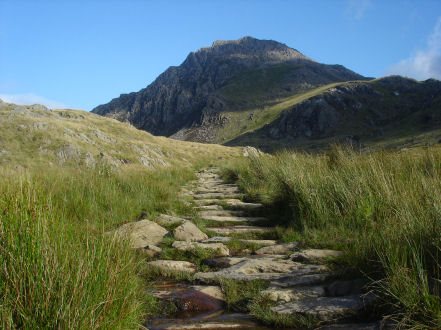
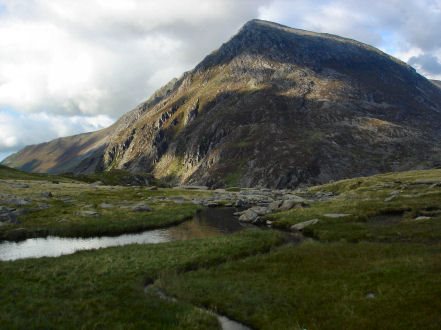
Highly popular with climbers and walkers, five of its peaks surpass 3,000 feet. The superb mountain scenery attracts over half a million visitors a year. The Dinorwig Power Station is housed within the range.
The Glyderau are a fairly rocky range , with some grassy and boggy ground towards the village of Capel Curig. The landscape was shaped by glaciers during the last Ice Age around 10,000 years ago and is regarded as one of the finest examples of a glaciated land form in Britain. According to Sir Ifor Williams, the word "Glyder" derives from the Welsh word "Gludair", meaning a heap of stones.
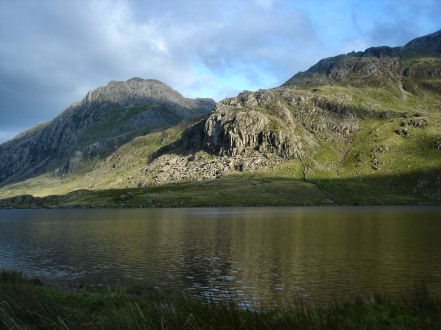
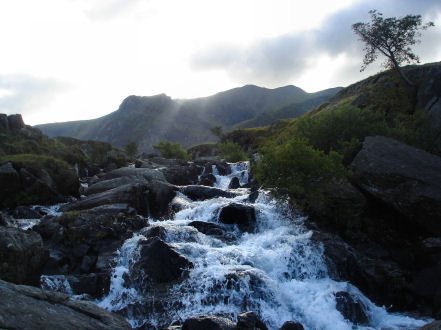
Cwm Idwal, on the northern slopes of the range was the first National Nature Reserve in Wales, a superb, rugged bowl, gouged out by ice, with a glacial lake at the bottom. Above the cwm towers the the cliffs known as the Devil's Kitchen, or Twill Du, in which can be seen the base of the great rock fold of the Snowdonia syncline.
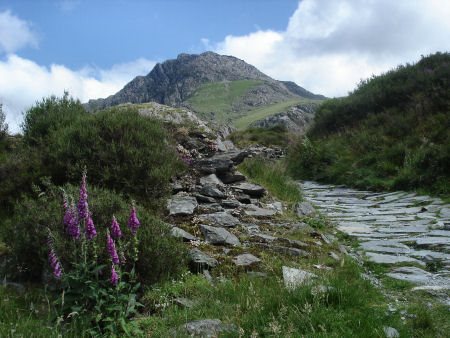
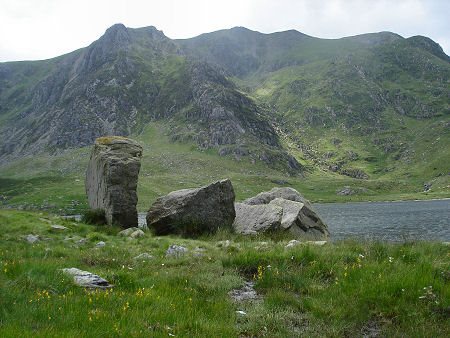
Glyder Fawr, from which the name Glyderau derives, is the highest peak in the range, at 999m, and is pronounced Gleyder Vower. Tryfan, by Llyn Ogwen, soars to 915m and is considered one of the finest peaks in Wales.
Peaks in the Glyderau over 3,000 feet
*Glyder Fawr 999m
*Glyder Fach 994m
*Y Garn 947m
*Elidir Fawr 924m
*Tryfan 915m
The route to the Glyderau commences from a footpath at the back of Ogwen Cottage, now a mountain rescue post by Llyn Ogwen and is a steep climb. The range can also be accessed from the Llanberis Pass.
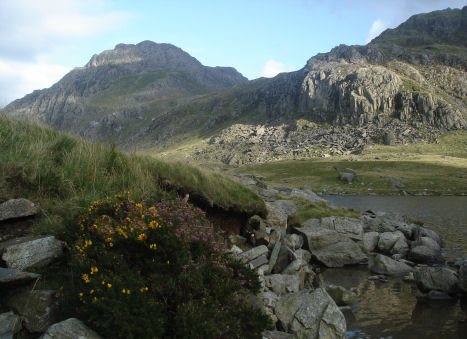
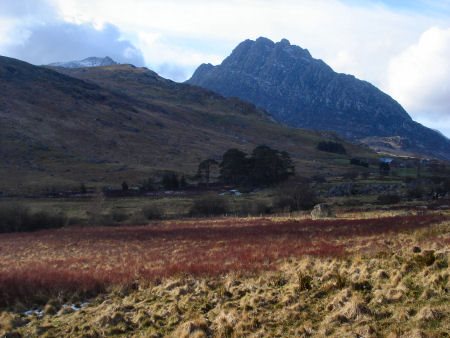
The rocky crags and crevices of the Glyderau are home to a variety of wildlife. The vegetation in the area includes heather and artic alpine plants and has evolved over the last 500 years as a result of upland farming.
The volcanic rocks provide arctic-alpine plants with the nutrients they require, and some of the artic-alpine plants in the area are relics of the Ice Age and thrive in cold conditions. Moss campion, mountain avens, Welsh poppy, alpine lady's mantle, Snowdon Lily and purple saxifrage can all be seen.
A walk to Y Garn from Ogwen Cottage
Distance -4.5 miles
*Starting from the car park at Ogwen Cottage by Llyn Ogwen, proceed along the signed footpath to Llyn Idwal which leads from the right of the waterfall.
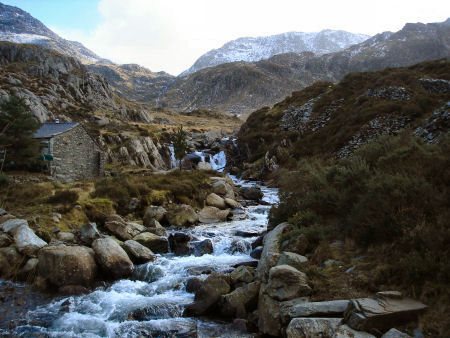
* Continue along the path, crossing the wooden footbridge past a further waterfall and follow along the northern shore of the lake. Leave the shore path and take the route heading to the west to begin climbing Y Garn.
*Descend towards the Devil's Kitchen, avoiding the gulley. On arriving at Llyn y Cwn take path that descends to Llyn Idwal. Do not continue all the way down to the lake side, but take the path that heads right towards the Idwal Slabs.
*.Follow the path which leads beneath the Idwal Slabs to again reach the footbridge, from this point retrace your sreps back to Ogwen Cottage.
Stay safe by following a few simple rules
Obtain a reliable local weather forecast before setting off and plan a route suitable to those conditions.
Check your equipment before leaving, take waterproofs, warm spare clothing, hat and gloves, food, drink, a map, a compass and survival bag.
Learn basic mountaineering skills particularly navigation.
If weather conditions turn bad, turn back.
Don't rely on mobile phones.